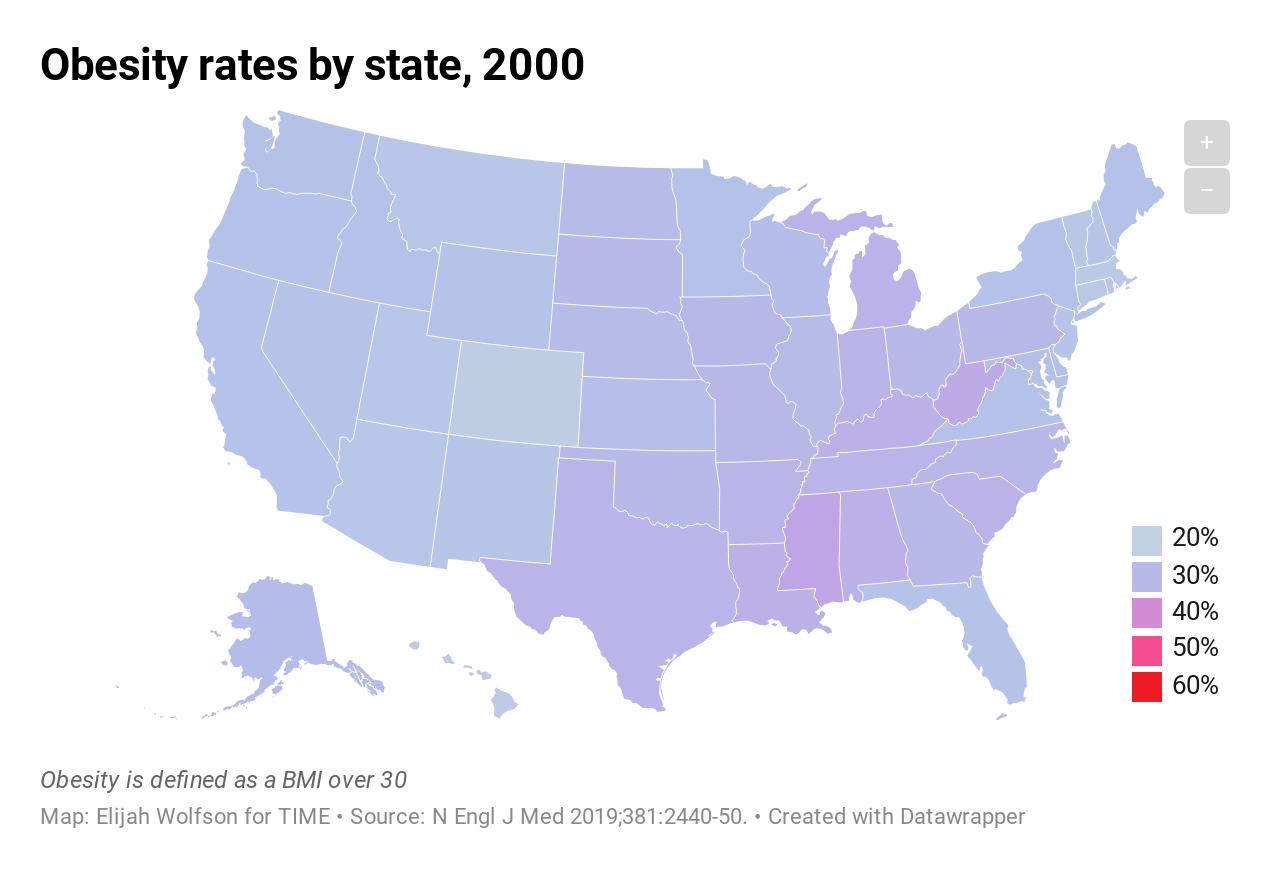Half of Americans are staring down the barrel of obesity, predictions indicate

A few minutes every morning is all you need.
Stay up to date on the world's Headlines and Human Stories. It's fun, it's factual, it's fluff-free.
In a study published in December 2019 in the New England Journal of Medicine, an influential group of medical scientists have predicted that by 2030, nearly one in two American adults will be obese, and nearly one-quarter will be severely obese.
The group adjusted for present underestimates of weight provided by around 6 million individuals in surveys spanning the United States.
In up to 29 states, the predominance of obesity will surpass 50%, with each state having at least 35% of citizens who are obese, they projected.

Likewise, the group predicted, in 25 states the predominance of severe obesity will be higher than one-quarter of adults, and severe obesity will turn into the most common weight classification among certain demographics including, women, non-Hispanic black adults and low-income adults across the country.
Yet, obesity specialists say that decision-makers in the United States aren’t doing much of anything to stop the likely outcomes of more obesity.
Preventions, including cutting back admission to large servings of sugar-sweetened soda, the scientists said, are basically prevented by affluent industries with the capability of minimizing the force of educational work by health departments that have tiny budgets correspondingly.
With rare exceptions, the sugar and beverage industries have halted nearly every effort to add an excise tax on sugar-sweetened beverages.
Statements that a tax as such is backwards and unjustly goes after low-income folks is ill-considered, said Zachary J. Ward, public health specialist at Harvard and the main author of the report.
“What people would save in health care costs would dwarf the extra money paid as taxes on sugar-sweetened beverages,” he told The New York Times.
Yet, in a municipality like Philadelphia, where a soda tax of 1.5 cents an ounce started in 2017, total purchases decreased by 38% despite that being after accounting for drinks folks purchased beyond the municipality, his co-author Sara Bleich told The Times’ Jane E. Brody.
However, she also added, little changes like this are not enough to spark a major change in the obesity predictions for the United States.
The outlook for obesity is only continuing a trend. “Obesity prevalence has increased in pandemic dimensions over the past 50 years,” according to a study in Nature Reviews Endocrinology. And obesity is one of the leading risk factors for premature death.
It was linked to 4.7 million deaths globally in 2017, which is nearly four times the number that died in road accidents and nearly five times the number that died from HIV/AIDS three years ago, according to Global Burden in Disease.
Furthermore, according to the World Health Organization (WHO) obesity is now significantly on the increase in low- and middle-income countries, especially in urban areas.
[article_ad]




Comments ()